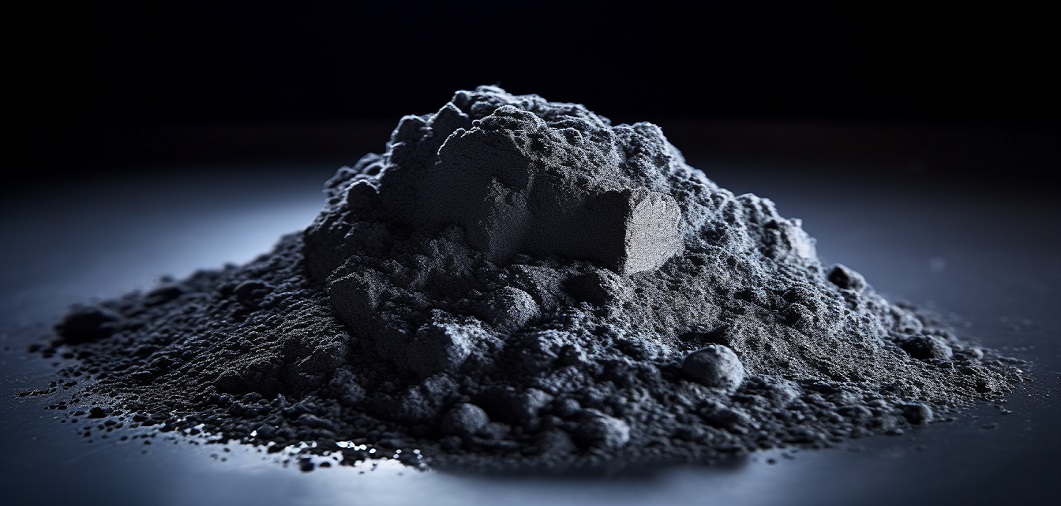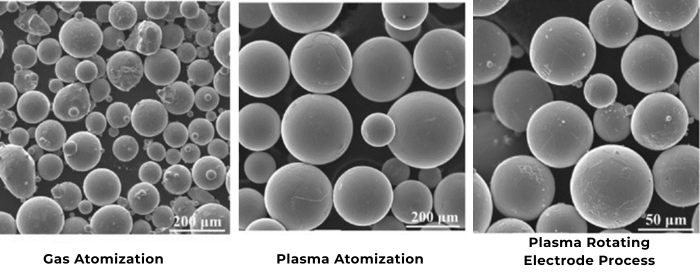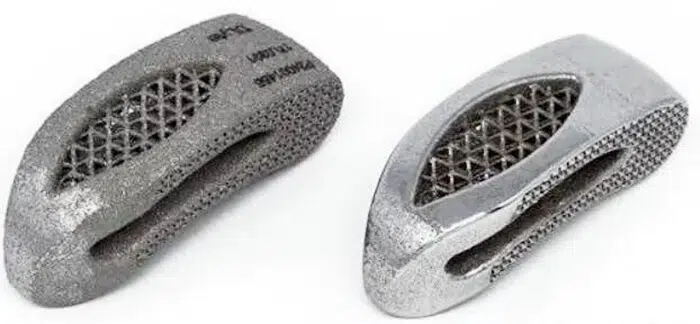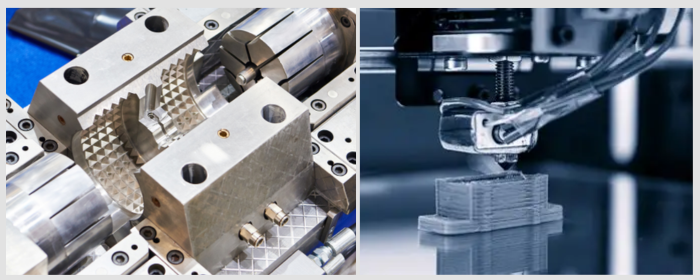

Tantalum powder has already gained a wide application in medical fields because of its excellent properties in resistance to high-temperature mechanical corrosion and biocompatibility. This article will summarize advantages from 3D-printed medical tantalum components and their clinical use in biomedical contexts.
As a refractory metal powder, tantalum powder is highly chemically stable. For example, it demonstrates excellent biocompatibility with human tissues. Since the tantalum metal does not irritate the human body or interfere with physiological activities, the medical community regards it as the best hard tissue implant material. In detail, as a medical 3D printing material, it has the following advantages:
The best feature of tantalum powder is its excellent biocompatibility; that is, it generates very few adverse reactions when in contact with the human body. For this reason, tantalum is used to manufacture medical implants such as hip joints, dental implants, and cranial repair plates. Because of their porous structures, it is possible that tantalum implants manufactured by means of 3D printing may realize very good integration with bone tissue, considerable promotion of growth, and better integration of bone cells.
Tantalum is highly resistant to corrosion; this means that it does not react with strongly acidic or alkaline solutions. Besides that, an oxide layer will form on the surface of tantalum, further enhancing its corrosion resistance.
Tantalum powder has very high strength and toughness, even at very low temperatures. This means that the shaping process of tantalum powder in 3D printing will be better controlled, making possible the manufacturing of complex geometries while retaining mechanical strength and toughness.
3D printing technology can be used to prepare porous tantalum structures. In such a structure, the surface area is large, hence it will provide ample chance for the growth and integration of bone tissue. For these reasons, 3D-printed tantalum powder is used in orthopedic implants, like hip joint cups and spinal fusion devices, to enhance implant stability and biological integration.
3D printing with tantalum powder generally produces components that have excellent resistance to fatigue, that is, stability under cyclic stress. This property is of great importance, especially in implants for biomedical applications, which are supposed to serve for a long period of time.
In conclusion: with its unique biocompatibility, high corrosion resistance, excellent mechanical properties, and complex structures, 3D-printed tantalum powder has been considered among materials for high-end medical devices.
With advancements in medical technology and materials science, there is a growing demand for personalized medical metal implants made of tantalum. There are numerous cases in the medical field where 3D-printed tantalum powder has been successfully applied.
One study, in 2015, represented the use of 3D-printed tantalum powder for the creation of implants of hip joints. The porous structures of tantalum were manufactured for hip cups using LPBF technology. Designing was aimed at better integration with the bone and reducing the postoperative problem of loosening to improve the chances of a patient's good recovery. That turned out of the study, it appeared that tantalum implants had excellent integration with bones, thus reducing the implant loosening problem and assured a good postoperative recovery prospect for the patients.
.png)
Fig 1. 3D-printed hip joint
A biomedical company based in Poland, in 2017, was involved in the production of tantalum powder through 3D printing for customized cranial implants according to a patient's needs. The implants were necessary for complicated craniofacial surgeries in replacing or repairing damaged skull structures, particularly where the fittings needed to be very well fitted. The postoperative results demonstrated that these tantalum implants ensured good biocompatibility within the patients' bodies, with no evidence regarding infection or rejection of the implant, along with proper integration into the bone.
.png)
Fig 2. 3D-printed Cranial Implants
In 2018, researchers constructed a spinal fusion device using 3D printing technology for use in spinal surgeries. Their devices were made from tantalum powder and embedded porosity to bone-cell-grow on it and provide better fixation and stability of the implant.
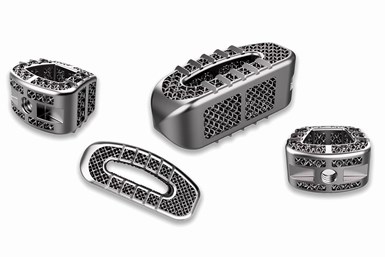
Fig 3. Spinal Fusion Devices
In 2020, a documented case report of the successful 3D printing of tantalum powder for cardiac valve stents was recorded. Because tantalum is highly biocompatible and resistant to corrosion, it should be the best material for stents. By using 3D printing technology, the research team could produce porous tantalum stents to better integrate with heart tissue and reduce thrombosis risks.
.png)
Fig 4. 3D-printed Cardiac Valves
These cases represent the applications and successes of 3D-printed tantalum powder in medical use, pointing out the superiority of tantalum and its huge potential in advanced medical devices.
It is expected that the medical application of 3D-printed tantalum powder will continue to develop with the occurrence of excellent material properties and the increasingly higher requirement for customization in medicine. As technology and techniques continue to advance, its application will go further. It could even be revolutionary in how implants and other devices are designed and produced in medical research, improving patient outcome and continuing to progress with medical engineering.
Stanford Advanced Materials (SAM) is a high-quality supplier of spherical metal powders, providing customers with 3D printing tantalum powders of different particle sizes, shapes and 99.9% purity. If you are interested, you can Get A Quote.
Reference
[1]. Geetha, M., Singh, A.K., Asokamani, R., and Gogia, A.K. (2009). "Ti based biomaterials, the ultimate choice for orthopaedic implants – A review." Progress in Materials Science, 54(3), 397-425.
[2]. Boyle, C., and Kim, I.Y. (2011). "Three-dimensional microstructural characterization of a porous tantalum biomaterial for orthopaedic reconstructive surgery." Journal of Materials Science: Materials in Medicine, 22(5), 1137-114
[3]. Zhang, S., Wei, Q., Shi, Y., and Liu, J. (2019). "3D printed porous tantalum implants: A promising strategy for enhancing osteointegration." Journal of Biomedical Materials Research Part B: Applied Biomaterials, 107(4), 998-1007.

